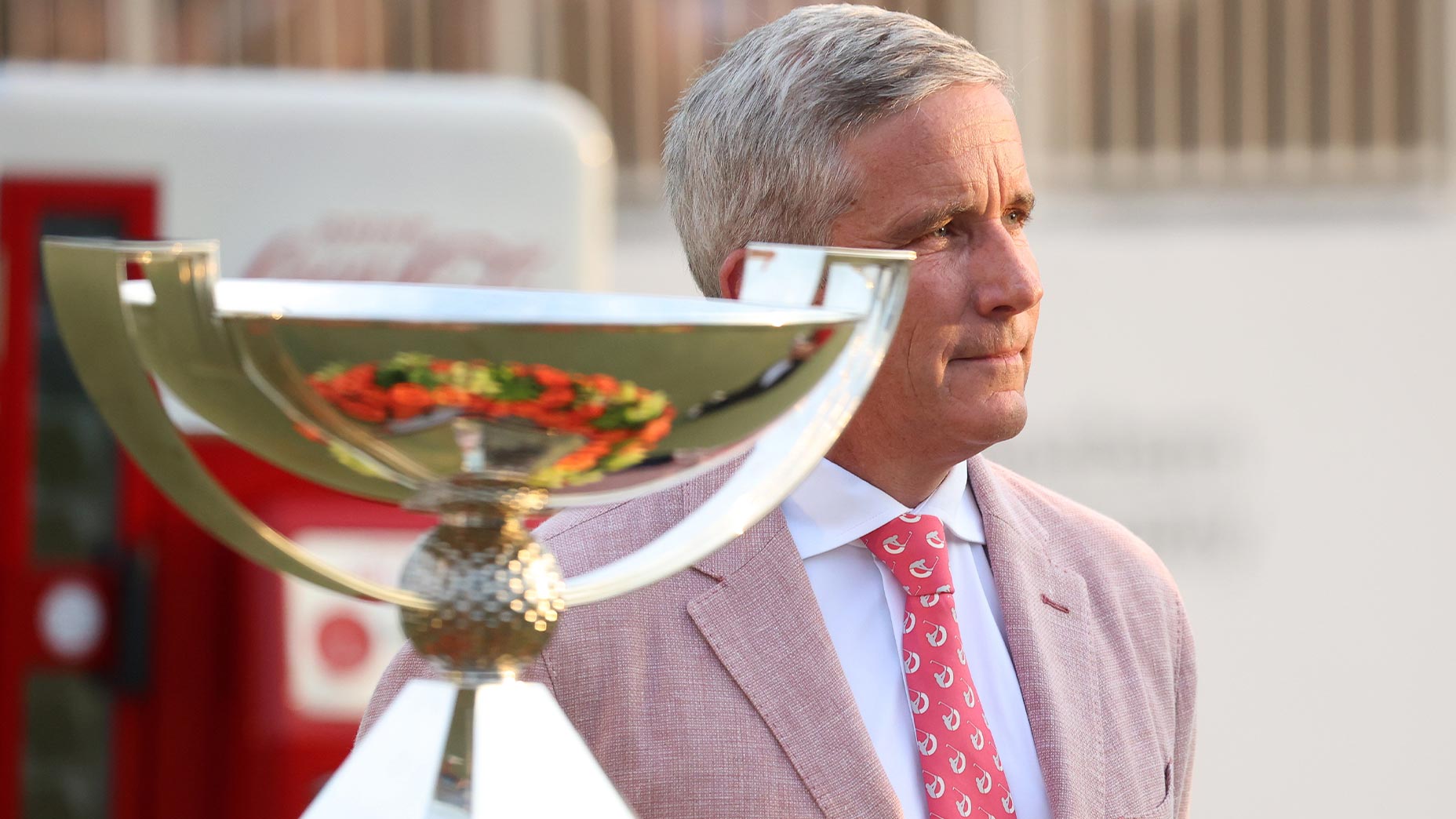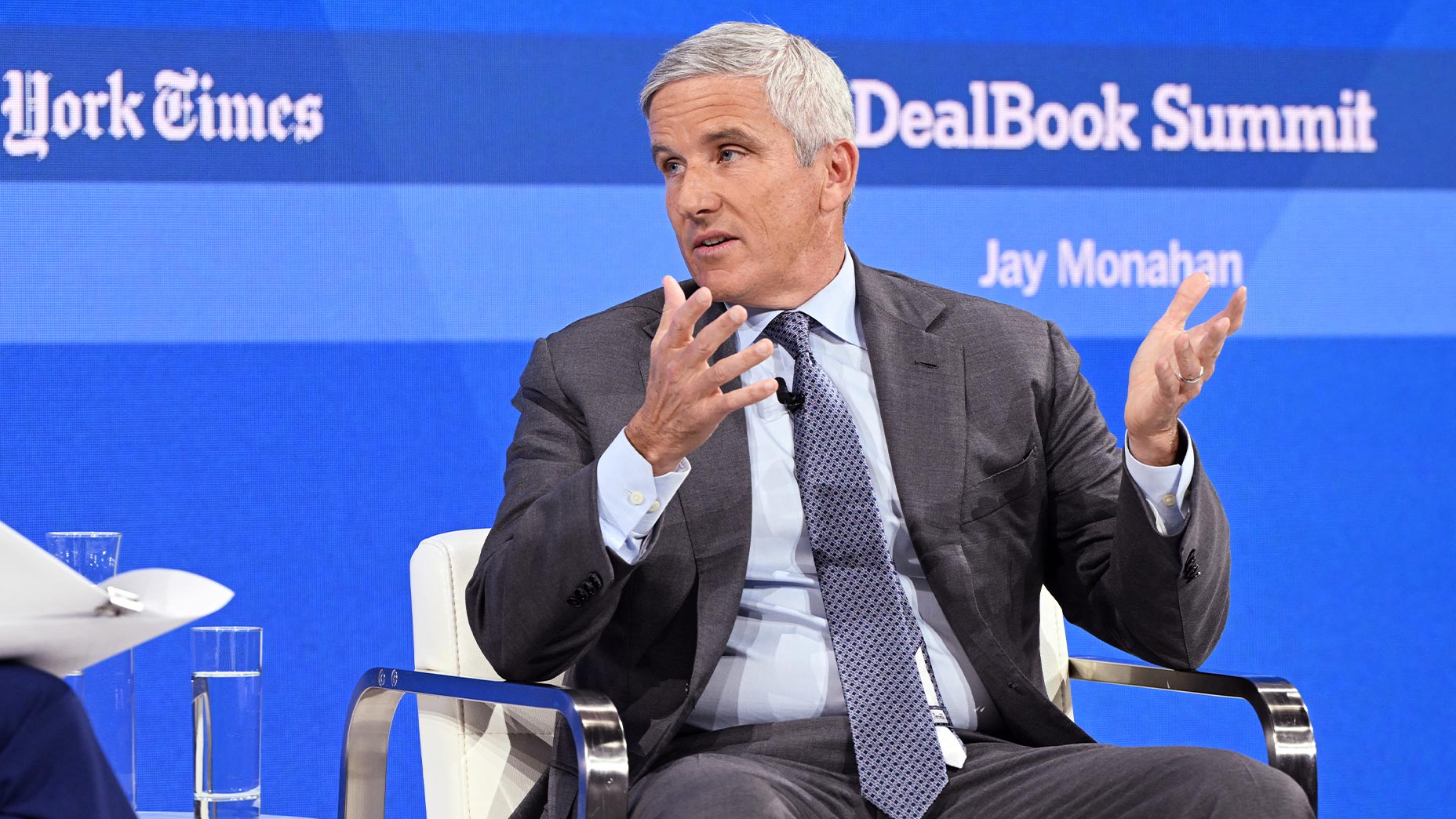Latest PGA Tour tax filings reveal true cost of golf’s civil war

Jay Monahan's salary was among the revelations from Wednesday's tax filings by the PGA Tour.
Getty Images
What has golf’s civil war cost the PGA Tour?
A lot.
Uh, could you be more specific?
Sure!
On Wednesday afternoon, Sportico published a report detailing its findings from the latest round of PGA Tour tax filings (for the fiscal year 2022) — and they were a doozy. For the first time since the start of the war between the PGA Tour and LIV Golf, the report offered a glimpse into the financial toll the war has taken on the world’s largest professional tour.
The biggest piece of that toll appears to have been legal fees — an area that has proven to be more than just a bugaboo for the Tour. After LIV’s entrance into the marketplace compelled the Tour to administer fines and suspensions, several of LIV’s players, the rival league itself and the Justice Department each filed legal queries against the Tour. Some of those squabbles spilled into the courtroom, leading to the now-infamous case titled Mickelson et. al vs. The PGA Tour.
The Tour was successful in those battles, and eventually squashed its legal woes by signing a framework agreement with the Saudi Public Investment Fund that dropped all suits “with prejudice,” meaning they cannot be relitigated. But the cost of legal fees in 2022 alone was considerable: $20.5 million, or more than 10 times what the Tour spent on legal fees in 2021. According to Sportico’s report, the Tour’s legal fees in ’22 were more than the previous 14 years of legal fees for the Tour combined.
The data represents a striking look into the financial havoc wreaked by LIV’s arrival — a development that not only pushed the Tour’s playing model to the brink but also threatened to drive up costs considerably away from the course. Under the U.S. tax code, the Tour is legally required to submit tax filings each year outlining its business to show it is adhering to its 501-3(c) tax-exempt status. Those filings, which aren’t released to the public until a year after they’re submitted, often include a word salad of data points and legal jargon, but also a few key pieces of data about the Tour’s finances, overall fiscal health and even its executive compensation.
Given the public nature of the filings, the Tour has been relatively forthcoming with data about the state of its business over the years. Tour commissioner Jay Monahan has spoken at length about the complexities of the Tour business in his dealings with the press, providing detailed explanations about some of the Tour’s more controversial forms of financial gymnastics, like the tens of millions placed in “strategic reserves.” On the business side, Tour leadership has had no qualms sharing top-line details of complex agreements like TV rights deals that help to fund the Tour business.
In the era of LIV, though, money in golf has become heavily politicized business. Players have left the Tour for purported eight- and nine-figure sums while simultaneously accusing the Tour of swindling them of hard-earned cash. The Tour has responded in kind with the creation of the “signature events” series and by engaging in talks with private equity partners, including the PIF, which could infuse the Tour with billions in new cash. But it remains to be seen how those changes would affect the Tour’s bottom line.
One thing we do know is how the developments of the last few years have affected Monahan’s pockets. According to the filings, the commissioner pulled in some $18.6 million in 2022, up some $5 million from the year prior. Surely the conversation surrounding Monahan’s compensation will be an unpopular one among the contingent of LIV defectors, particularly in the face of yet another high-paid executive raking in cash while his company flounders. But it’s hardly unusual to see Monahan’s salary as high as it is — particularly not in the modern era of sports executive compensation. In fact, to his $65 million-per-year NFL counterpart Roger Goodell, Monahan’s salary looks like a pittance.
On the whole, the Tour’s latest filing shows a snapshot of a business at war. Revenues are up, in large part driven by the media-rights deals that will net the Tour some $715 million annually from U.S. partners alone through the end of the decade. But so are other costs, which present an existential issue for a league on a (relatively) fixed income.
We won’t learn until next year how this year affected the Tour’s bottom line, and if things were actually as bad as Tour officials have portrayed them to be. But this latest wave of data is revealing, particularly as the Tour heads into the final stages of negotiations with the PIF before a proposed Dec. 31 deadline.
These are pricey times in golf. Wartime usually is.














